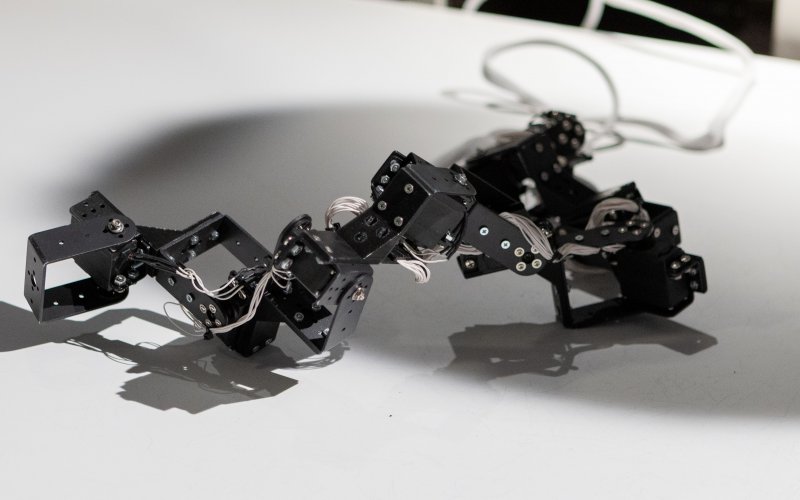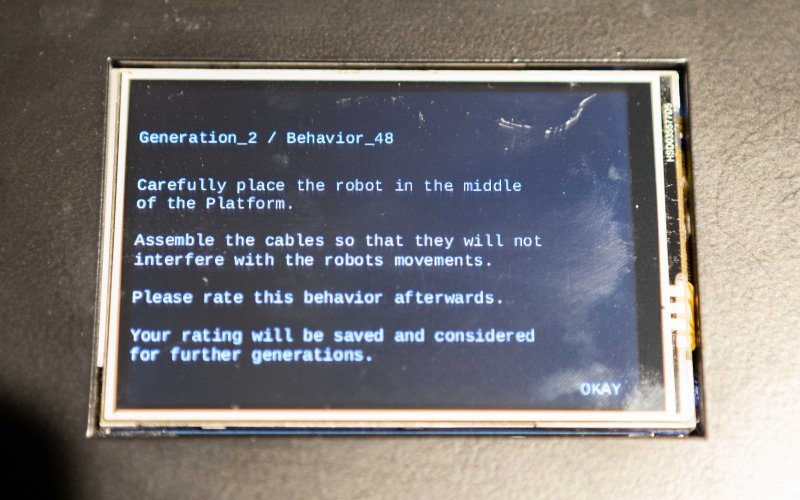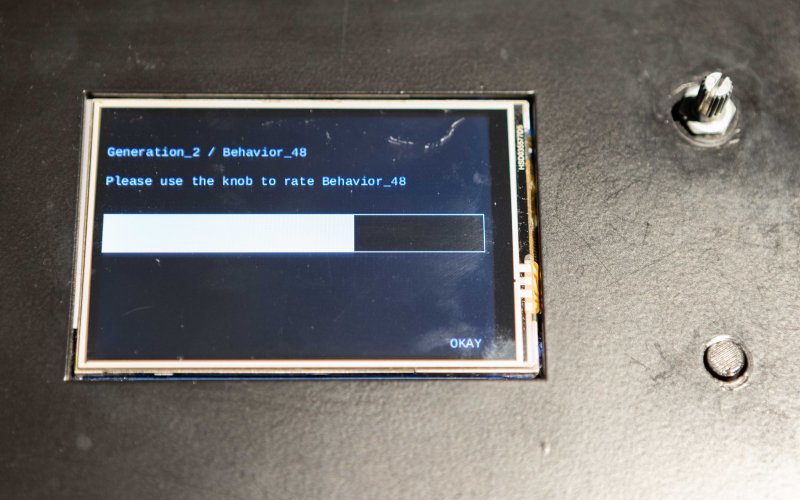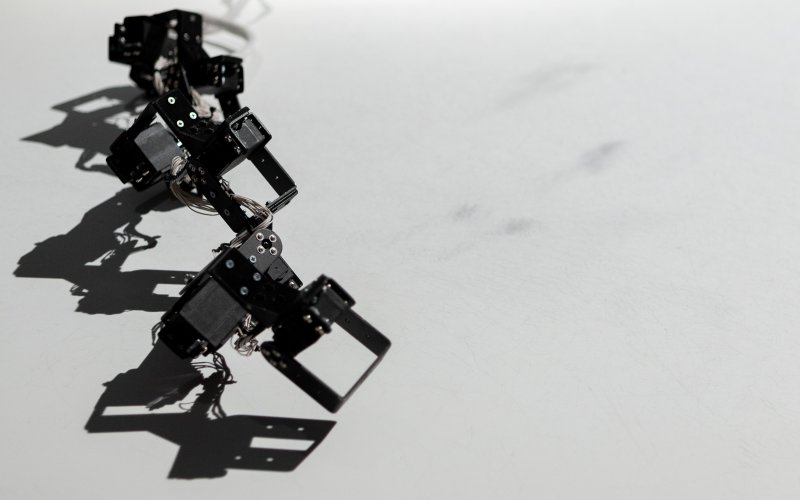1000 Behaviors
Termine:

1000 Behaviors is an experimental framework for investigating and further developing the movement behavior of a robot. The robot consists of nine motor segments connected to each other via joints. The movements are specified by a data set. This was initially generated randomly. In the course of the exhibition, these movements are performed and evaluated through interaction with visitors in order to find a supposedly optimal behavior.
Data structure
The movement data of the robot snake is structured into generations, behaviors, and units. Each unit represents a motor and contains the values that determine the pendulum movements of the motors. Each behavior is formed by nine motors. And each generation consists of 1000 of these behaviors.
Data collection
For each new generation, the robot tests all behaviors. To do this, it performs the prescribed movements of this behavior in a specific time and in front of an observer. Exhibition visitors can become part of the recording process by assigning a quantified rating to individual behaviors. The ratings are made on the basis of intuitive criteria. In this process, 1000 Behaviors constantly evolves, influenced by many observers, the framework, and the materiality of its own mechanical body.










